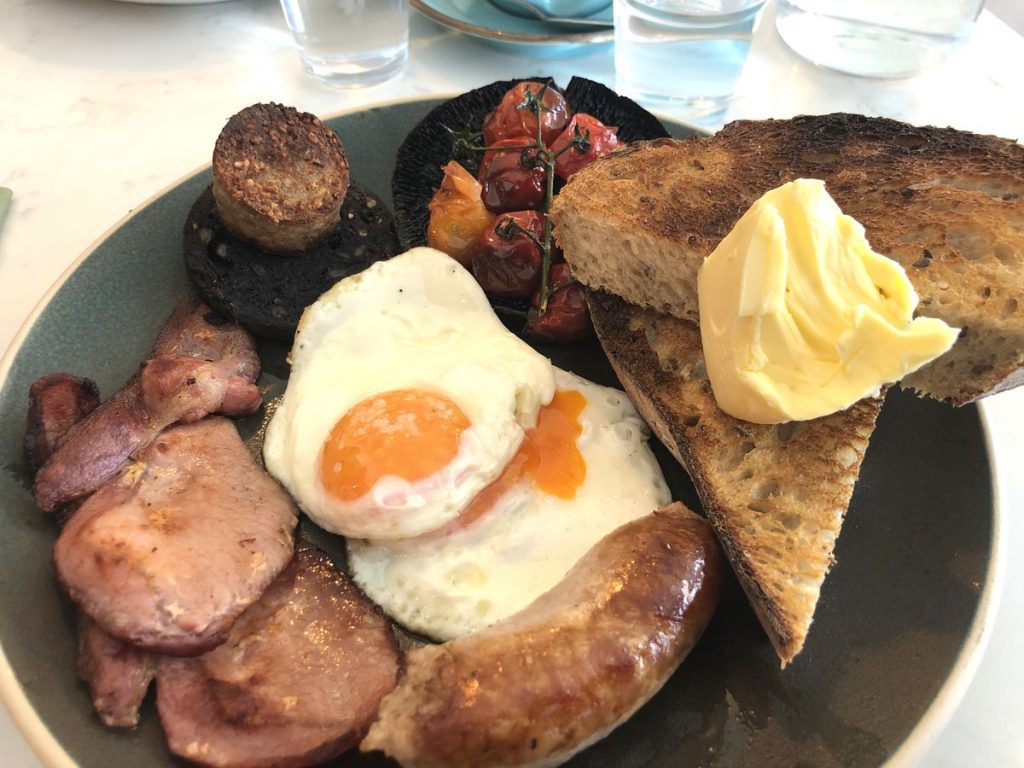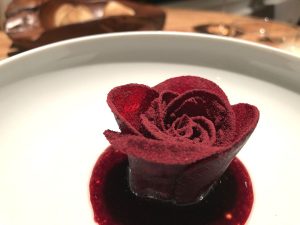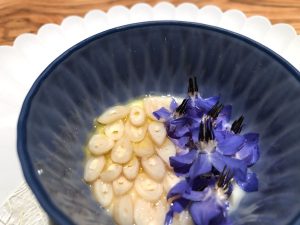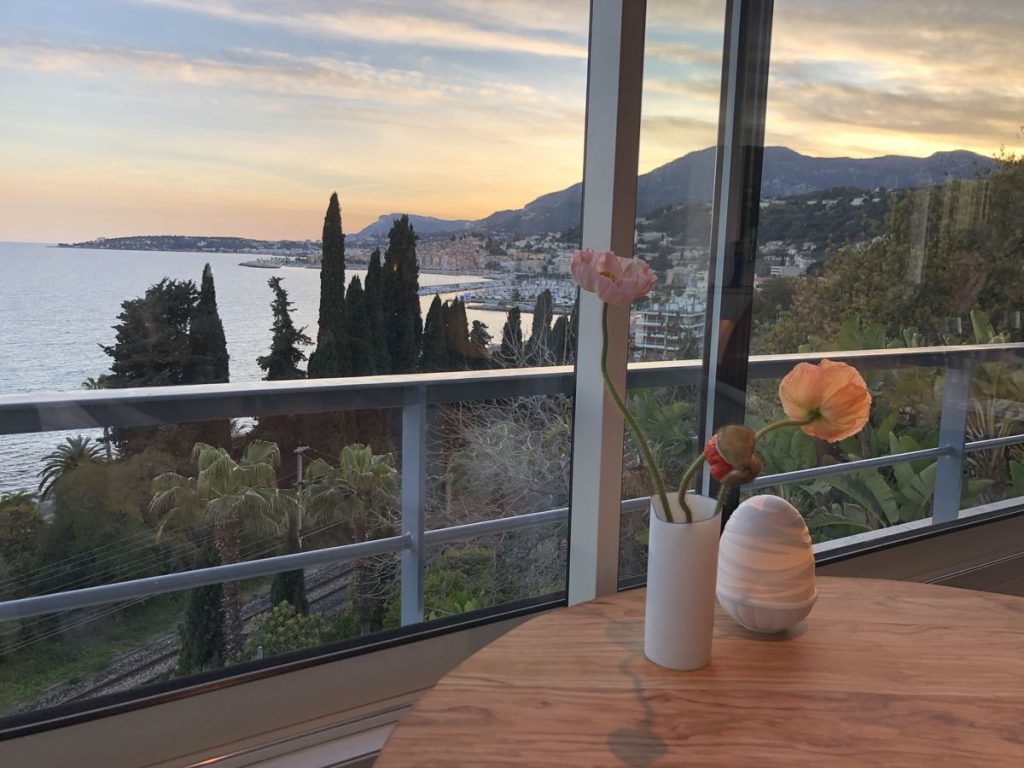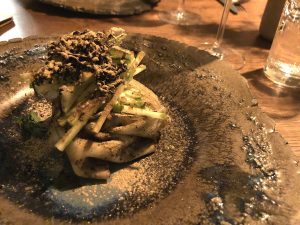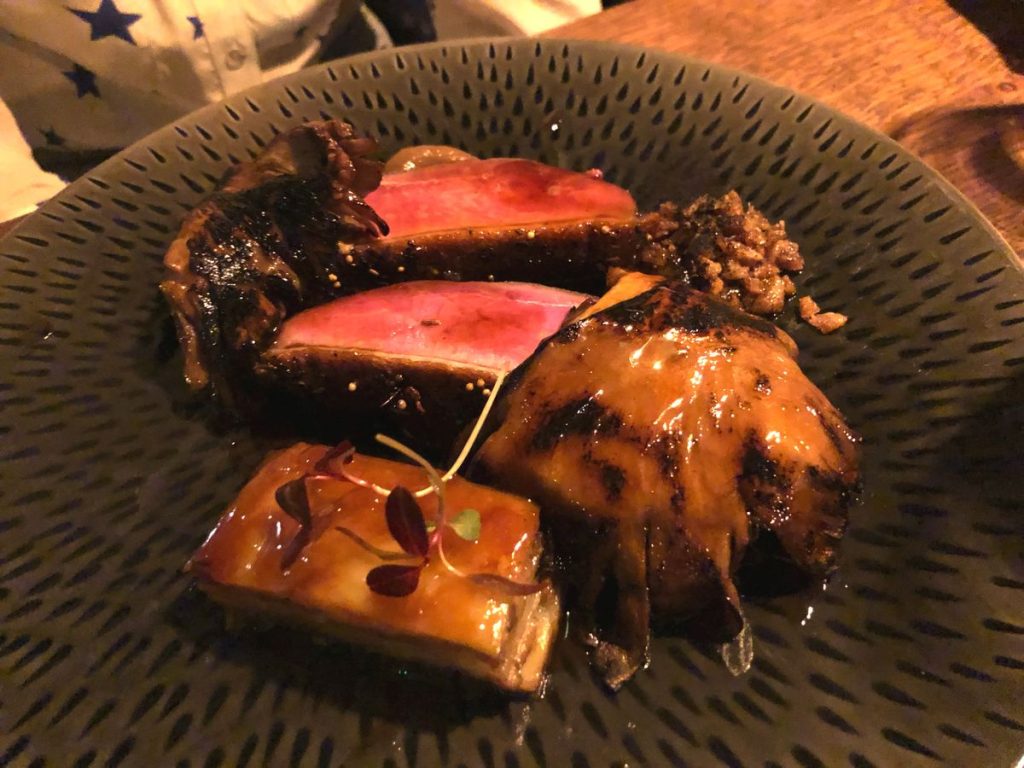Wallingford is an odd town. It looks a bit tattered and most of the shops are ones you’d imagine to have been there for thirty or forty years, gradually fading. Yet its a handsome old country town and right in the middle the main supermarket is a large Waitrose. Plus it has the Five Little Pigs, which seems to have parachuted in from Marlow or Henley, very smart and modern but relaxed.
I had to have the full English, or as they call it: the Five Little Pigs. Sausage, white pudding, black pudding plus two rashers of bacon = five. I think the bacon is cheating. Maybe lard to spread on your toast would finish the five better? The toast was EXCELLENT. Not often I put toast in caps. Thick sliced, scorched, of the most delicious seeded sourdough, apparently from the Orange Bakery in nearby Watlington. All the meat is local too, and every element was excellent. Particular shout-outs to the very herby white pudding and the utterly piggy sausage. Special mention to the tangy rhubarb ketchup they’d whizzed up to go with it all.
Maureen’s kedgeree was satisfying too, hefty on the trad English curry flavour. All in all a worthy brunch, and I came away with a strong sense that you wouldn’t be disappointed by lunch or dinner at the Five Little Pigs.








